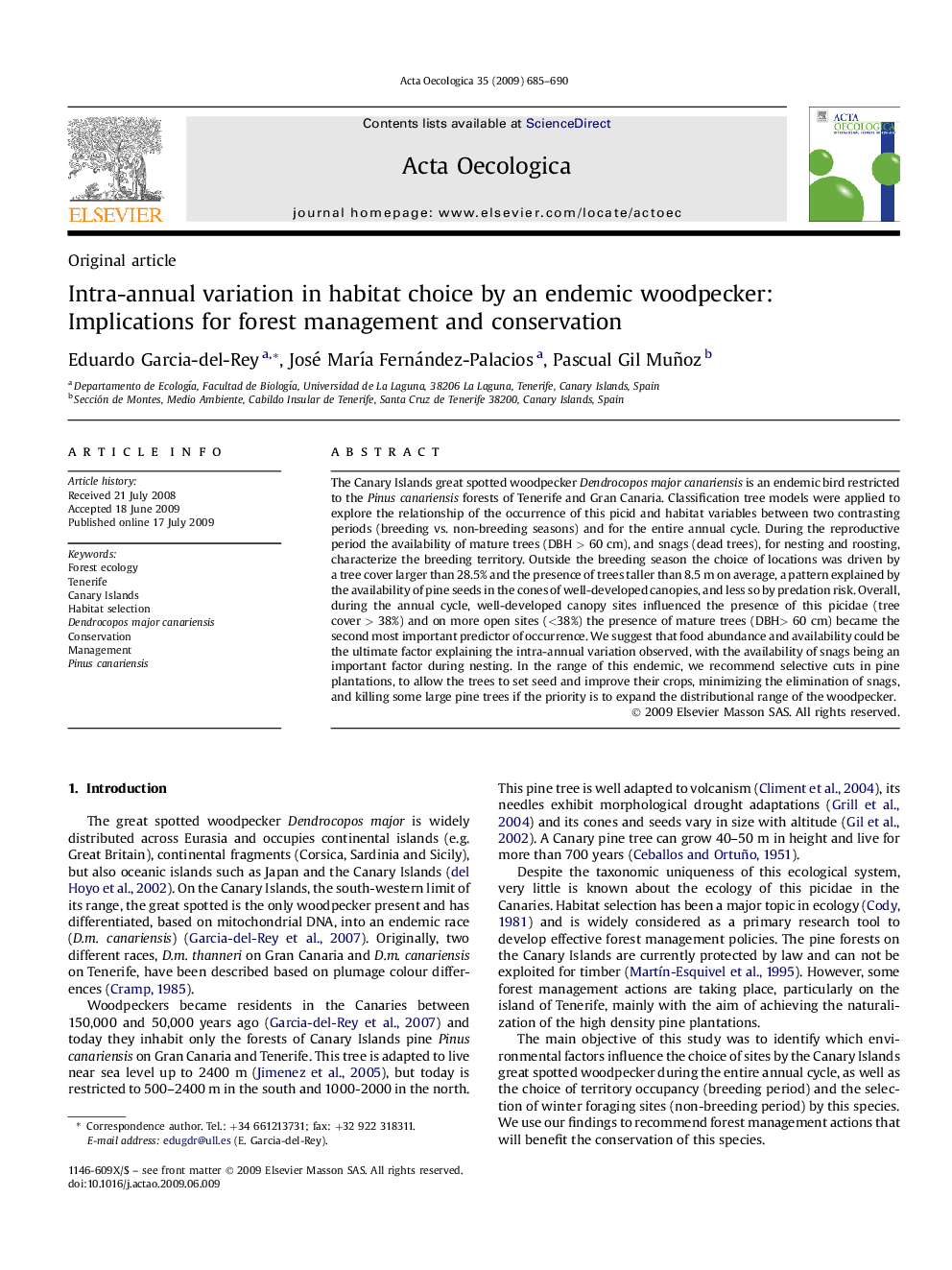| Article ID | Journal | Published Year | Pages | File Type |
|---|---|---|---|---|
| 4381436 | Acta Oecologica | 2009 | 6 Pages |
Abstract
The Canary Islands great spotted woodpecker Dendrocopos major canariensis is an endemic bird restricted to the Pinus canariensis forests of Tenerife and Gran Canaria. Classification tree models were applied to explore the relationship of the occurrence of this picid and habitat variables between two contrasting periods (breeding vs. non-breeding seasons) and for the entire annual cycle. During the reproductive period the availability of mature trees (DBH > 60 cm), and snags (dead trees), for nesting and roosting, characterize the breeding territory. Outside the breeding season the choice of locations was driven by a tree cover larger than 28.5% and the presence of trees taller than 8.5 m on average, a pattern explained by the availability of pine seeds in the cones of well-developed canopies, and less so by predation risk. Overall, during the annual cycle, well-developed canopy sites influenced the presence of this picidae (tree cover > 38%) and on more open sites (<38%) the presence of mature trees (DBH> 60 cm) became the second most important predictor of occurrence. We suggest that food abundance and availability could be the ultimate factor explaining the intra-annual variation observed, with the availability of snags being an important factor during nesting. In the range of this endemic, we recommend selective cuts in pine plantations, to allow the trees to set seed and improve their crops, minimizing the elimination of snags, and killing some large pine trees if the priority is to expand the distributional range of the woodpecker.
Keywords
Related Topics
Life Sciences
Agricultural and Biological Sciences
Ecology, Evolution, Behavior and Systematics
Authors
Eduardo Garcia-del-Rey, José MarÃa Fernández-Palacios, Pascual Gil Muñoz,
